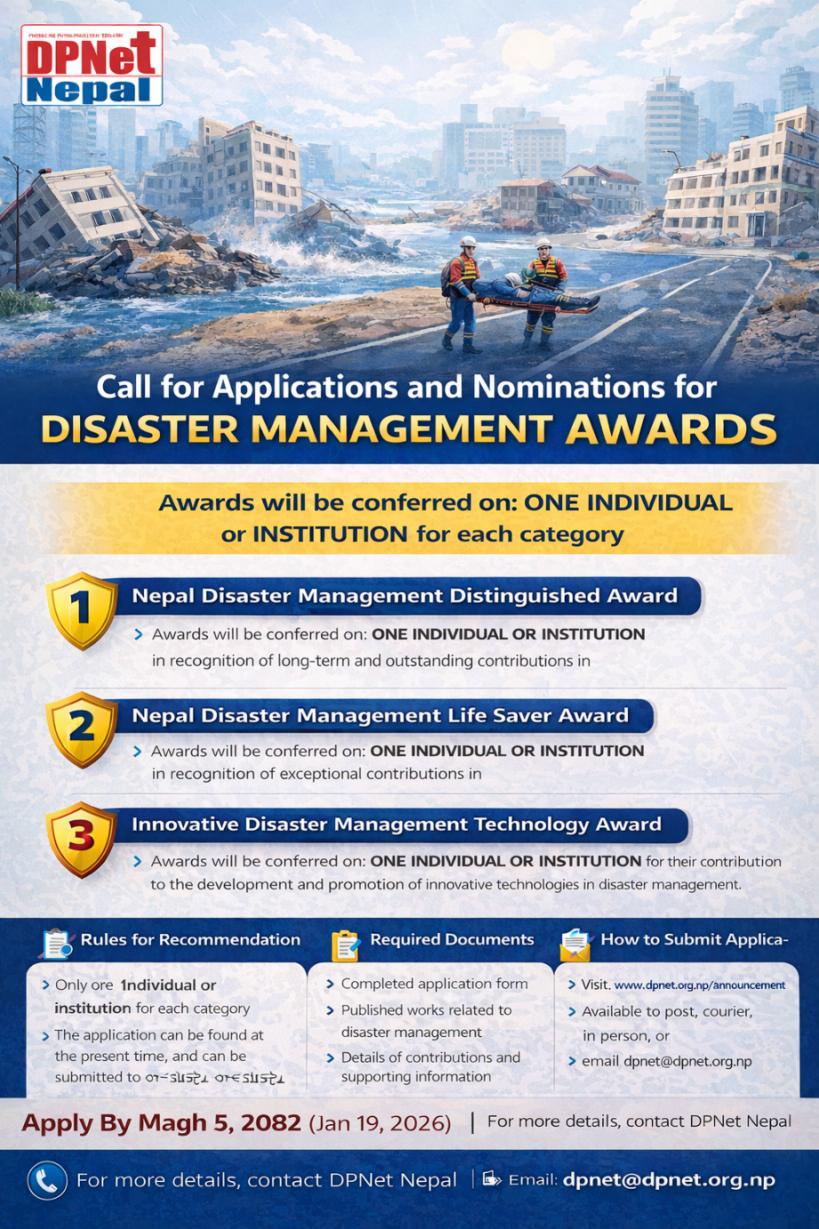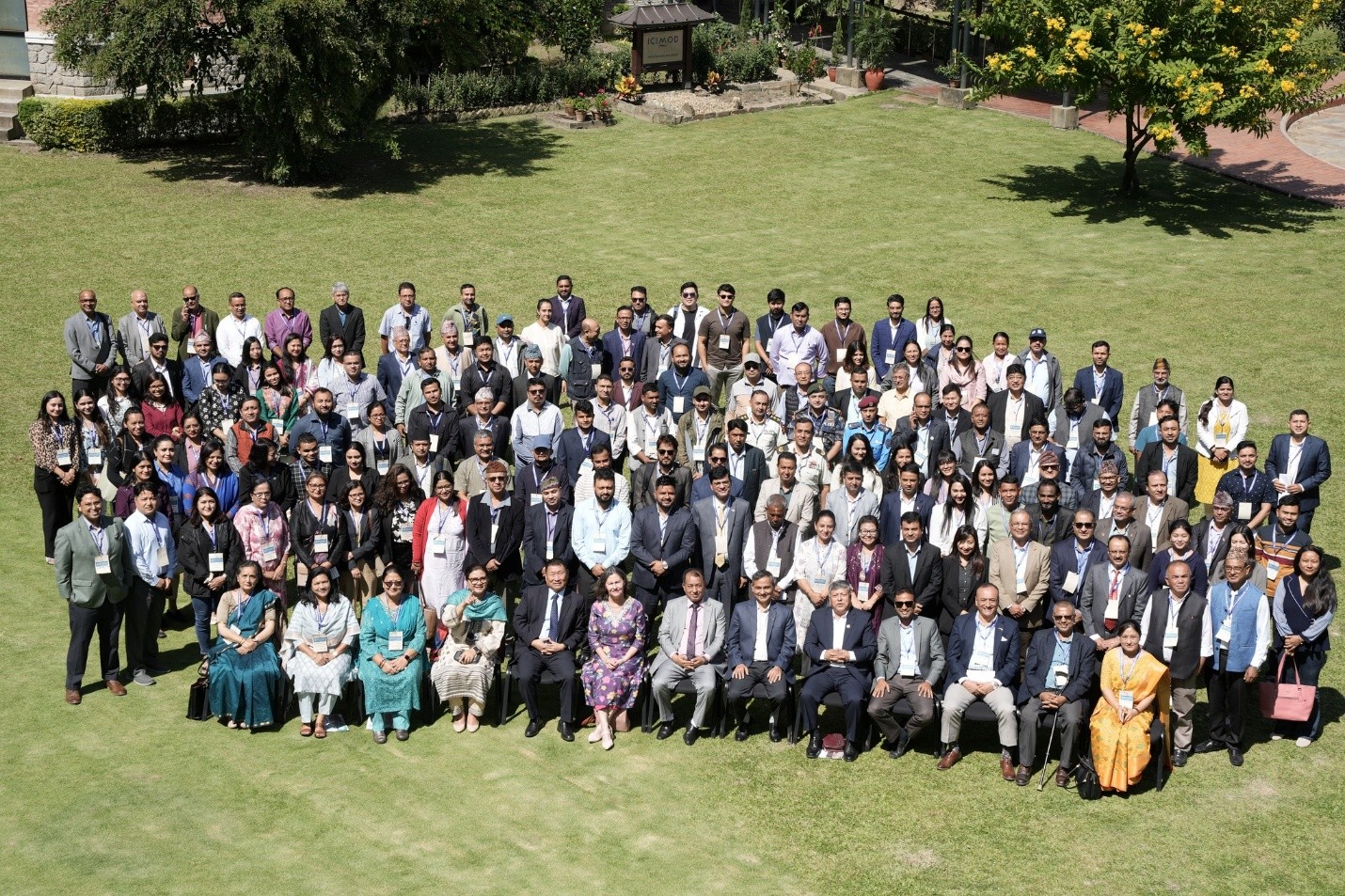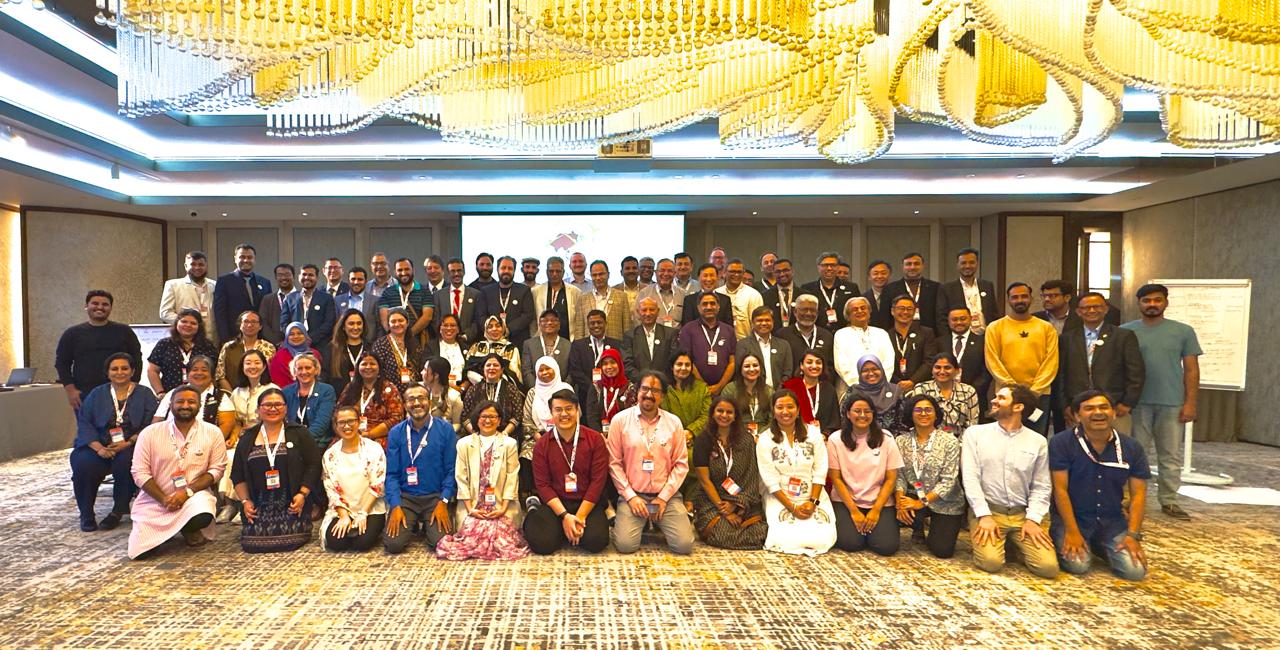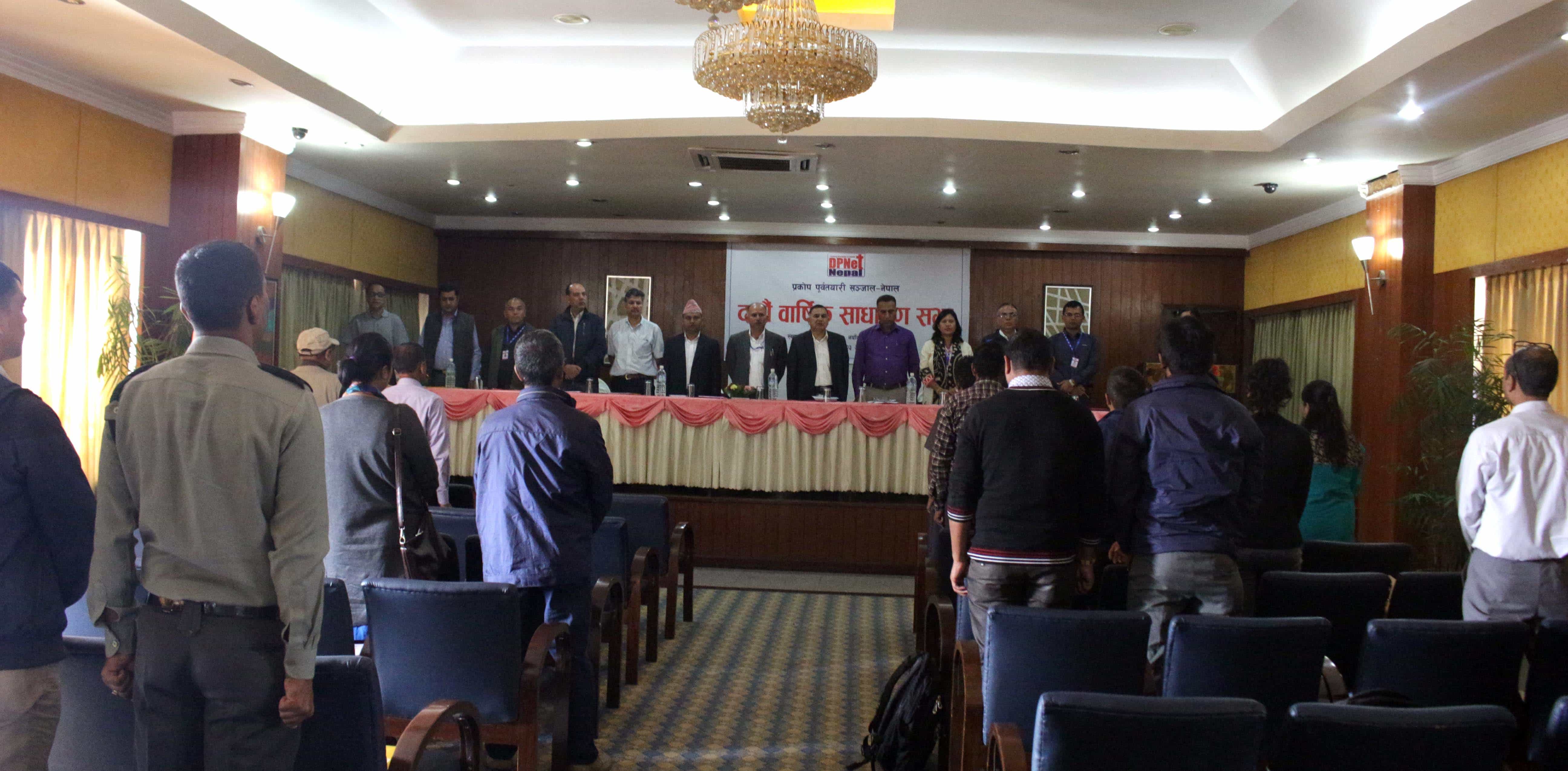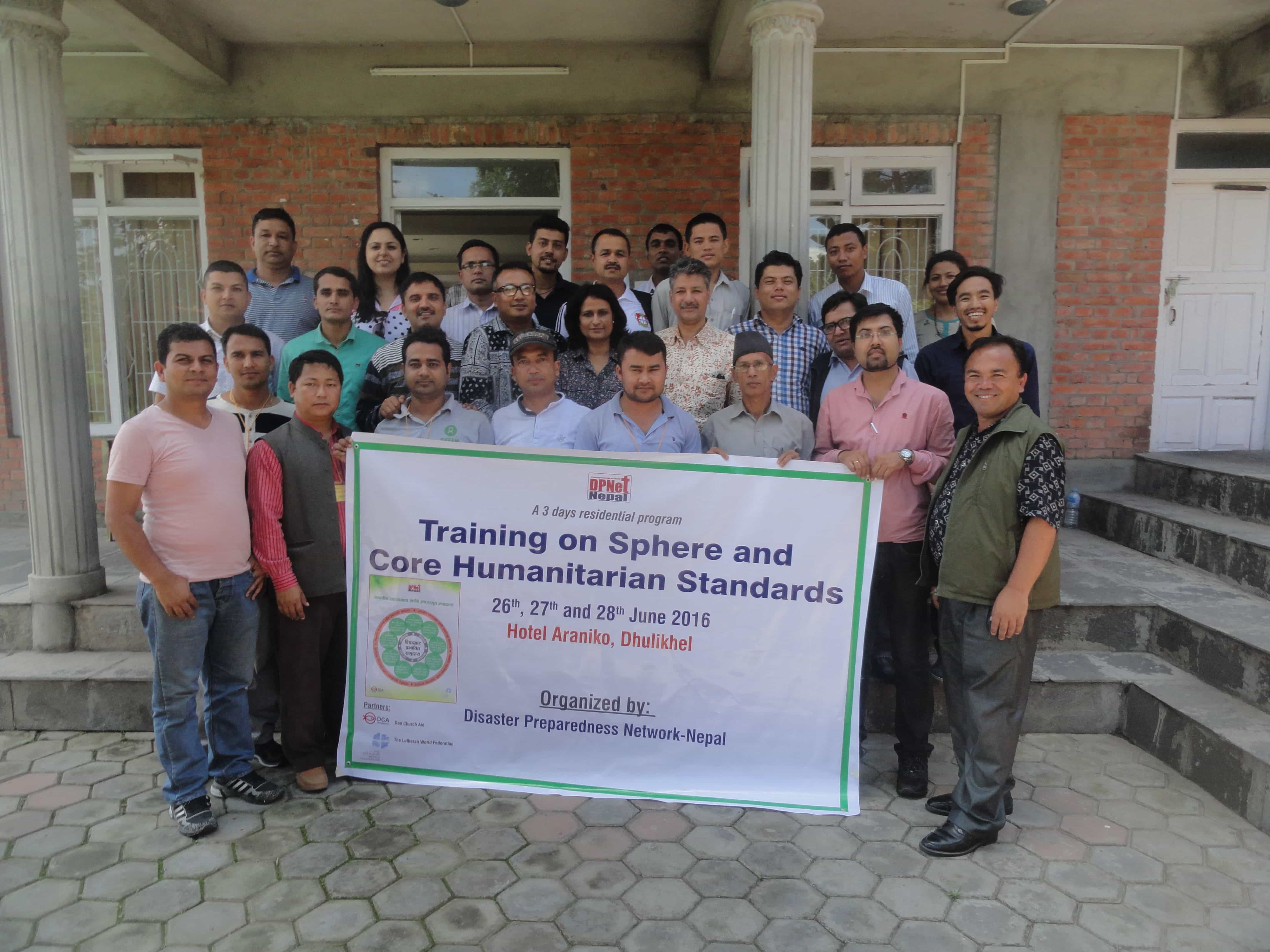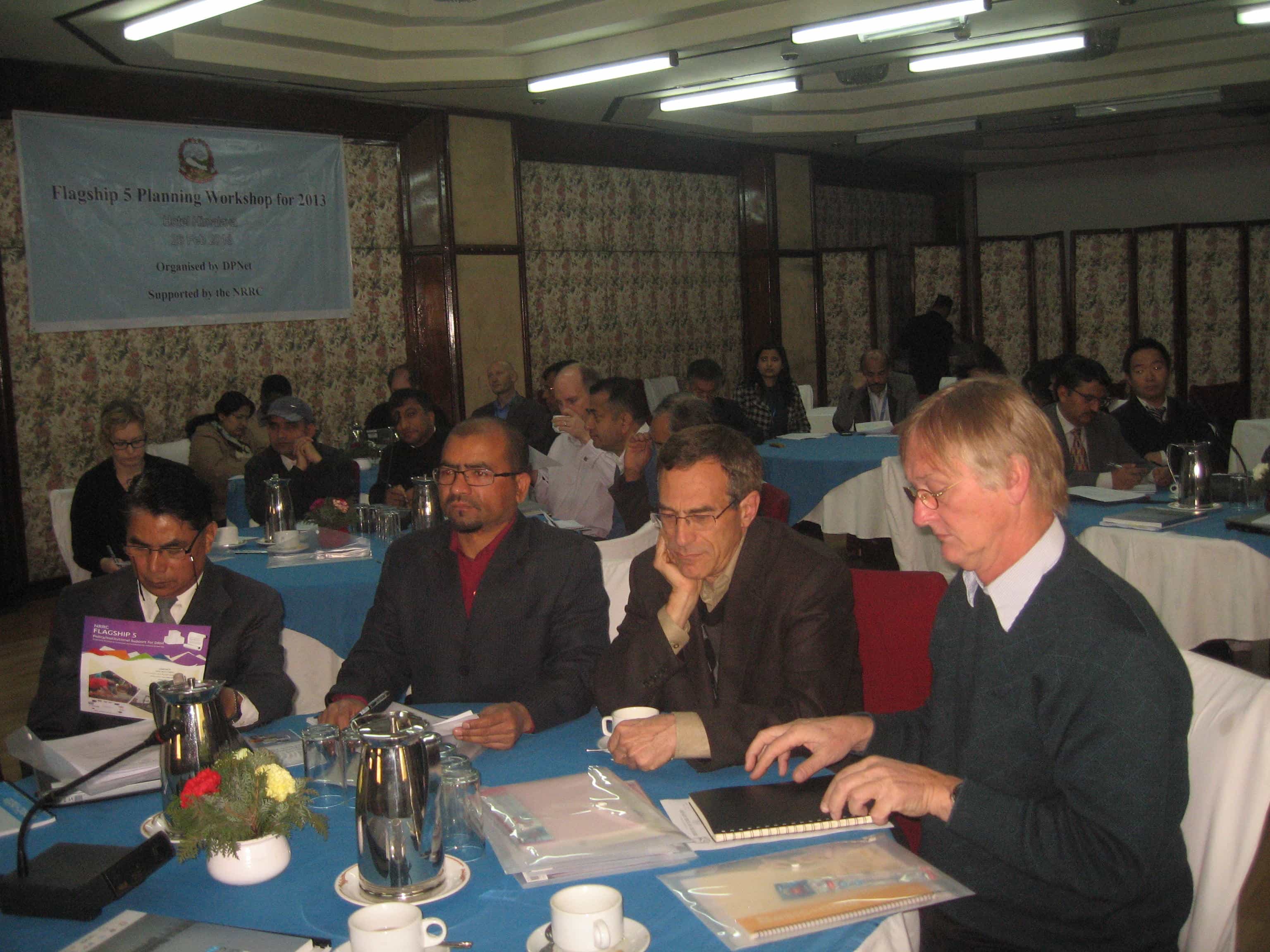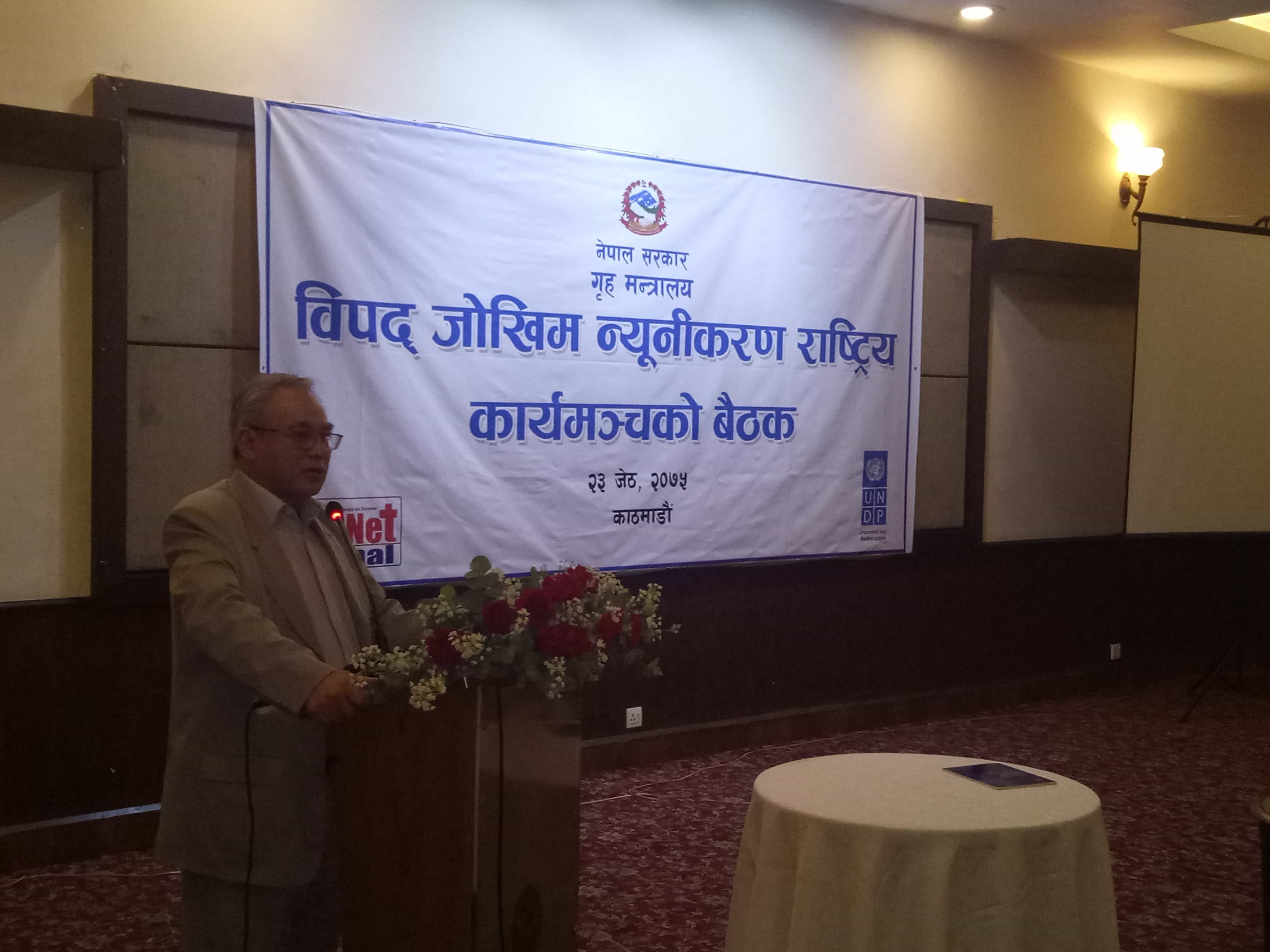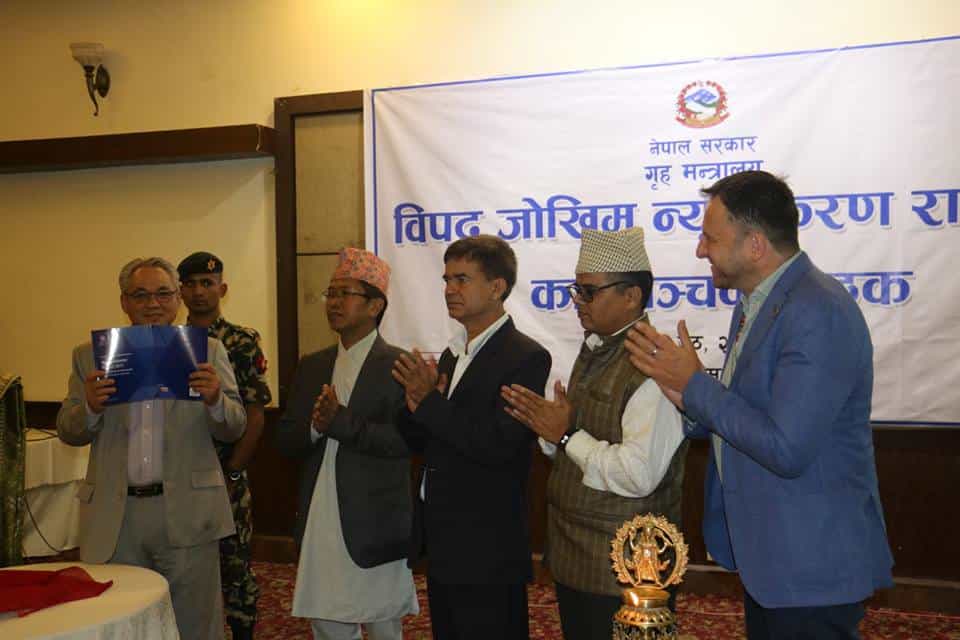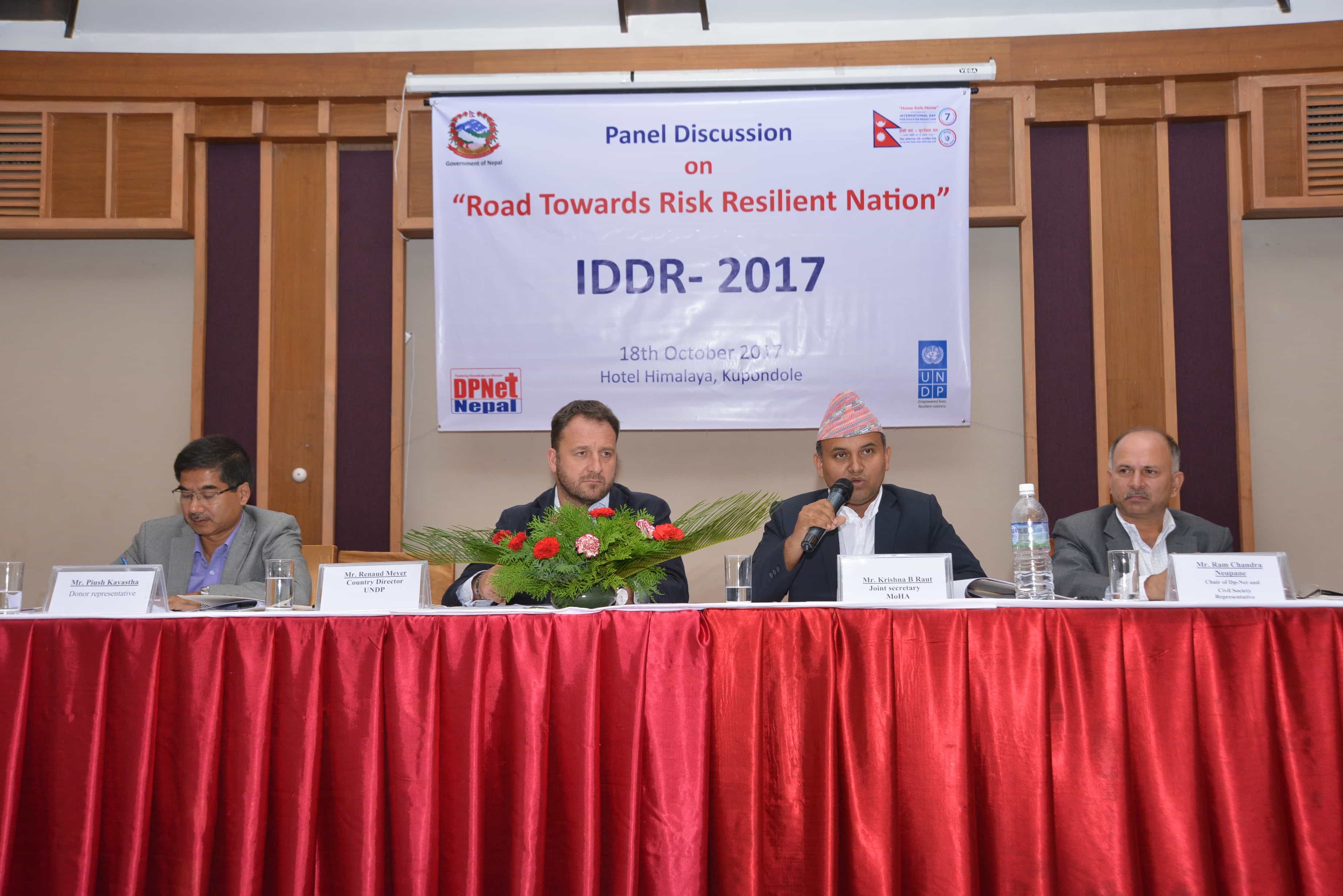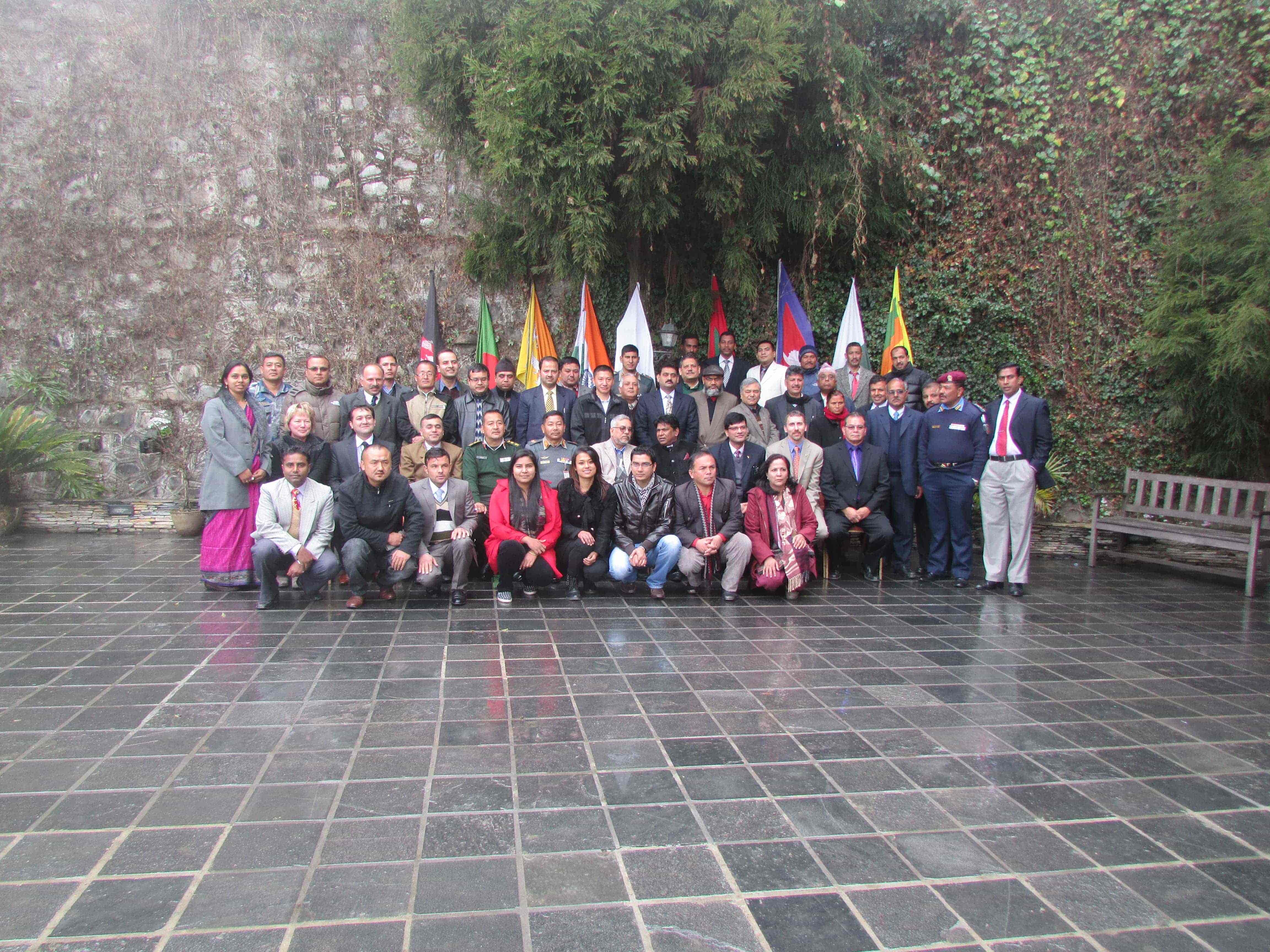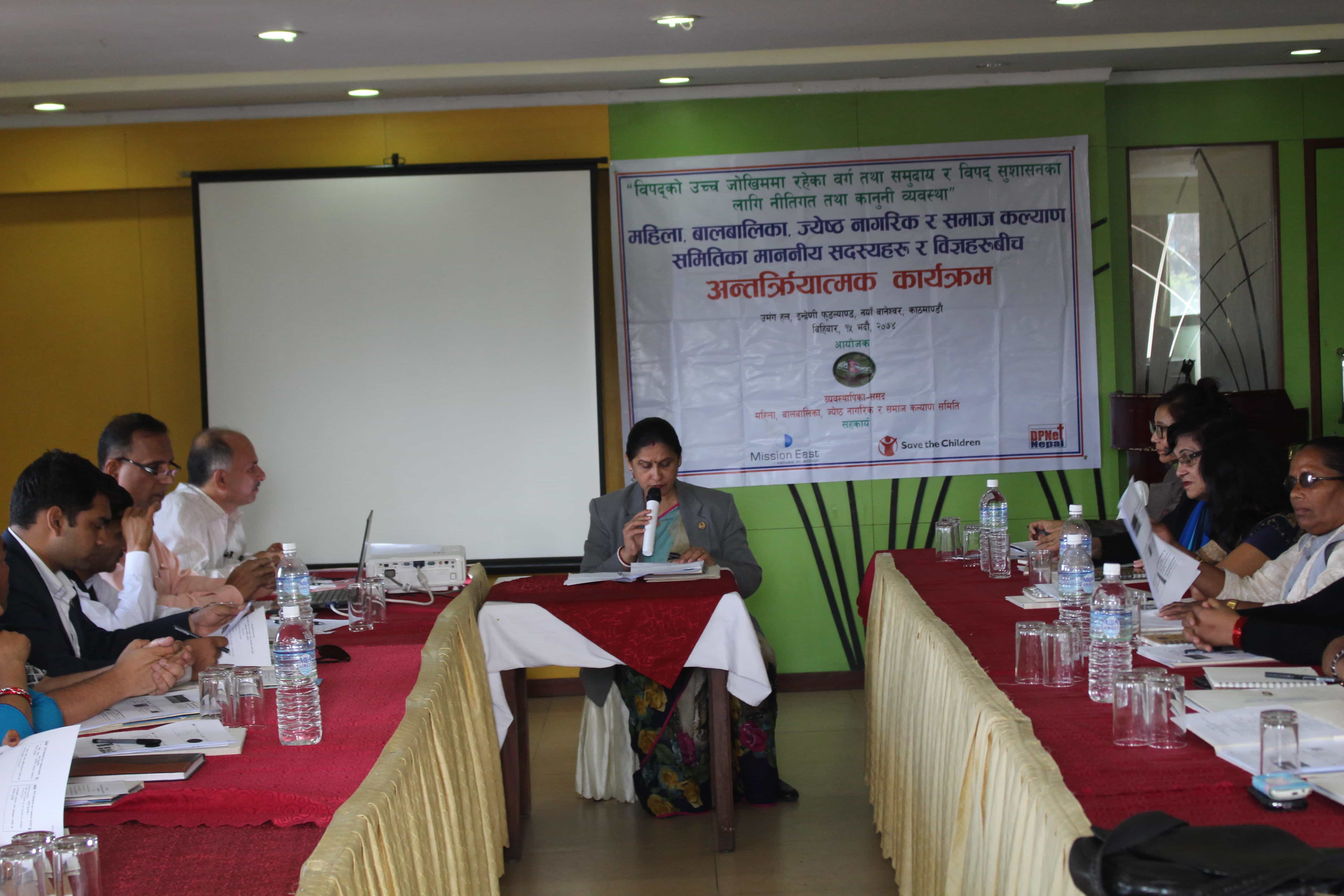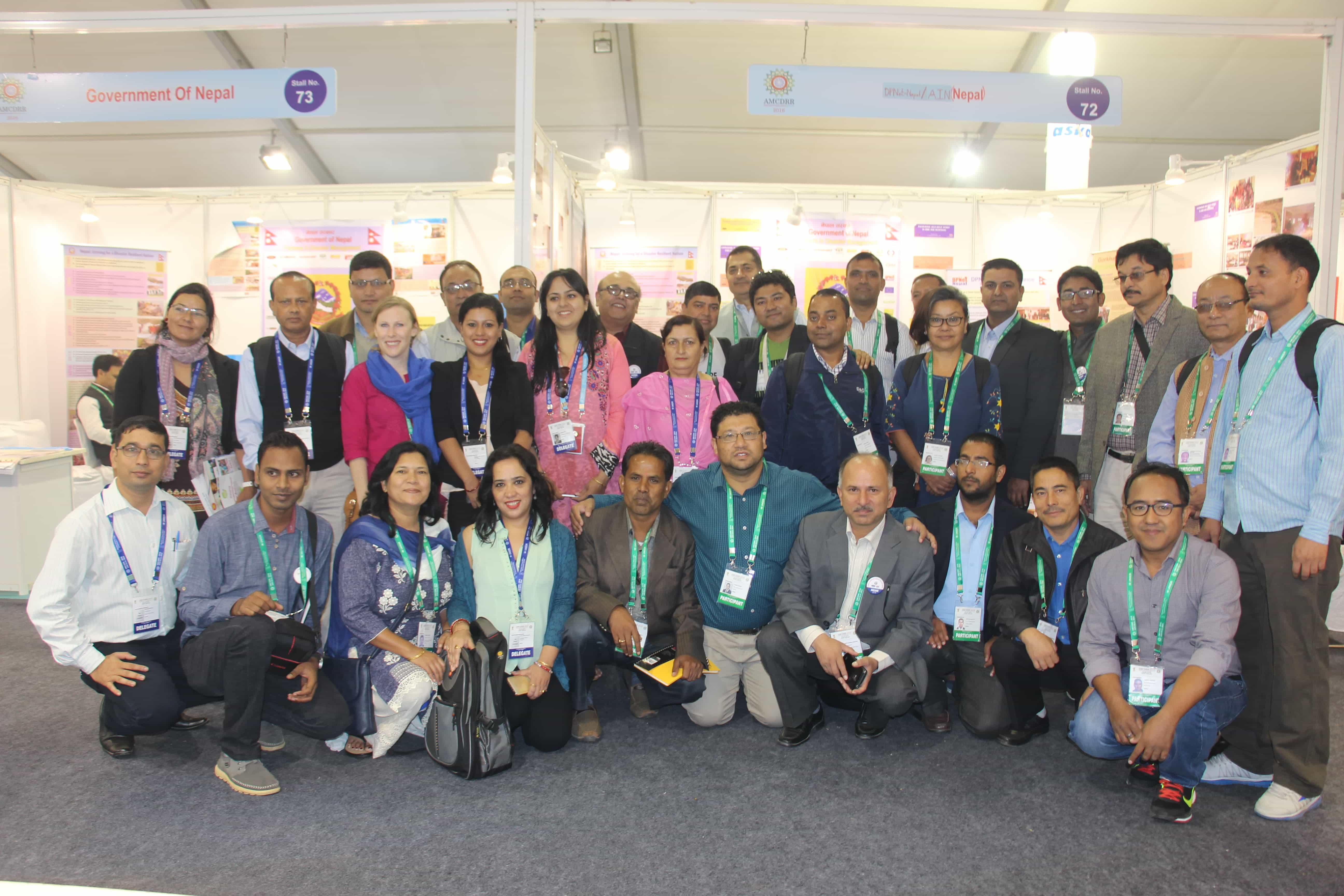Nepal's Unified Delegation Leaves Mark on GPDRR 2025 Outcomes
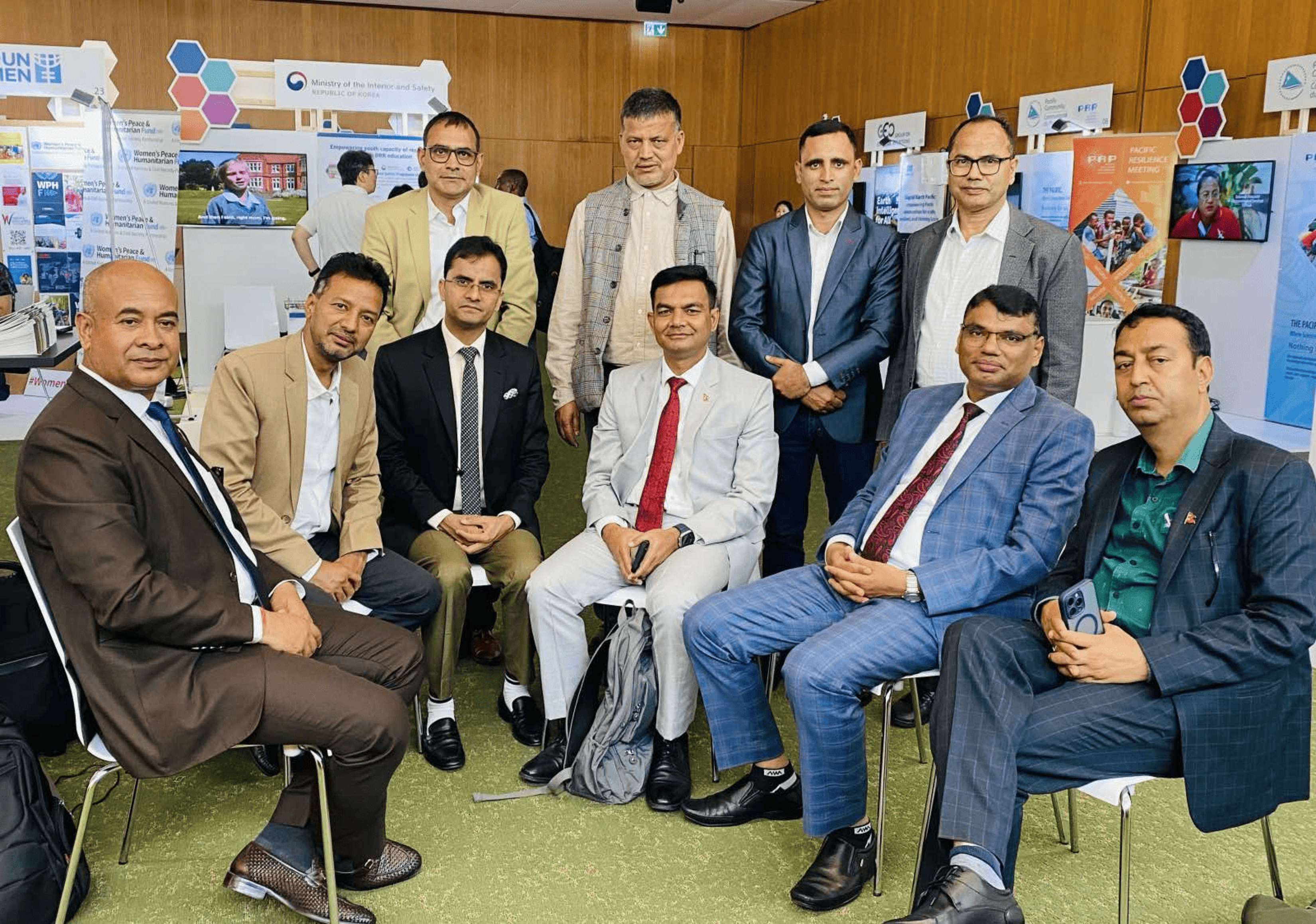
Geneva, Switzerland, June 6, 2025: The eighth edition of the Global Platform for Disaster Risk Reduction (GPDRR 2025), recognized by the UN General Assembly as the leading multi-stakeholder forum for assessing global progress on the Sendai Framework, concluded successfully today in Geneva. Organized by the United Nations Office for Disaster Risk Reduction (UNDRR) and hosted by the Government of Switzerland, this biennial event from June 2-6 brought together more than 3,400 delegates from 166 countries.
GPDRR serves as an important global forum where governments, UN agencies, civil society, academia, and the private sector converge to review progress, share insights, identify gaps, and forge pathways to enhance disaster resilience globally. This year's theme emphasized urgent, integrated action toward risk reduction, innovative financing, and inclusive governance to address escalating climate-induced hazards.
Nepal made a substantial and highly visible impact at the GPDRR. The 38-member Nepalese delegation, led by Home Secretary Gokarna Mani Duwadi, included key figures such as Dinesh Bhatt, Executive Chief of the National Disaster Risk Reduction and Management Authority (NDRRMA), and was coordinated by Dr. Raju Thapa of DPNet under the National Platform for Disaster Risk Reduction (NPDRR). The delegation actively engaged in multiple sessions, effectively showcasing Nepal’s strategic initiatives, policy advancements, and robust disaster preparedness frameworks.
Months of meticulous preparation preceded Nepal’s participation. The delegation presented a comprehensive position paper developed through extensive consultations with over 5,000 stakeholders nationwide. Remarkably, this document was made accessible in print, digital, and Braille formats, a pioneering initiative praised widely by international participants, including UNDRR officials. Secretary Duwadi effectively communicated Nepal's present situation, highlighting significant challenges and achievements.
In the Ministerial Roundtable, Secretary Duwadi highlighted Nepal’s vulnerability to multiple natural hazards such as earthquakes, floods, glacial lake outburst flood and cloudbursts, exacerbated by climate change. He vividly illustrated this through the tragic cloudburst incident in Kathmandu in September 2024, which caused 56 fatalities and inflicted over USD 460 million in economic damages. Highlighting a severe fiscal gap identified through recent assessments, Duwadi emphasized Nepal’s urgent need for innovative financial solutions, including catastrophe bonds and parametric insurance mechanisms tailored to the nation's distinct risk profile.
Secretary Duwadi also drew attention to the rapidly worsening climate crisis in the Himalayas, emphasizing that melting glaciers significantly threaten mountain communities. Referring to the recently held Sagarmatha Dialogue in Kathmandu, he reiterated Nepal's demand for global climate justice and better access to international climate finance tools like the Green Climate Fund, Adaptation Fund, and the Loss and Damage Fund. These resources, he argued, are important for building resilience and implementing long-term adaptation strategies.
In his address to the Multistakeholder Plenary, Duwadi elaborated on Nepal’s commitment to strengthening disaster governance through the establishment of the NDRRMA in 2019 and aligning national development policies with the Green Resilient and Inclusive Development (GRID) initiative. He highlighted the country’s achievements in conducting multi-hazard risk assessments, integrating community participation, and employing advanced technologies like artificial intelligence and real-time data systems to improve early warning and risk communication. The Secretary stressed the importance of inclusive disaster planning, ensuring marginalized groups have access to digital solutions informed by indigenous knowledge.
At the High-Level UNDRR-BIMSTEC event, Secretary Duwadi presented Nepal’s progress under the Disaster Risk Reduction National Strategic Plan of Action (2018–2030). He emphasized steps made in reducing disaster mortality, infrastructure retrofitting, localizing DRR strategies, and improving social protection standards. Duwadi urged the creation of a unified BIMSTEC disaster mechanism to harmonize risk assessments, monitor Sendai Framework implementation, and establish a dedicated regional DRR fund. His appeal for joint innovation and accountability was warmly received.
Similarly, Inspector General Raju Aryal of Nepal’s Armed Police Force (APF) highlighted the importance of community disaster volunteers and emphasized high-level training and community participation for effective disaster management. He detailed the establishment of Nepal’s Mountain Rescue Training School and disaster management training academy as vital steps toward national resilience. Aryal strongly advocated for collective global effort and inter-agency coordination, reinforcing that isolated actions are insufficient for managing disasters effectively.
Nepal's delegates actively participated in various question-and-answer sessions, showcasing good practices and lessons learned. At the Ignite Stage, Dr. Raju Thapa presented Nepal’s success story in cost-effectively adopting and localizing the Sphere Minimum Humanitarian Standards following major crises, notably after the devastating 2015 earthquake. His practical and cost-efficient approach drew significant international attention, inspiring delegates from countries facing similar disaster challenges.
Vinod Prasad Parajuli and his team's innovative integration of science, technology, and indigenous knowledge for disaster preparedness at schools was specially acknowledged by UNDRR. This achievement significantly contributed to showcasing Nepal’s capacity to effectively merge modern technology with traditional knowledge.
Nepal’s inclusive participation drew extensive praise, prompting UNDRR head Kamal Kishore, in his closing remarks, to encourage delegates worldwide to learn from Nepal. Kishore shared significant global progress in disaster risk reduction, noting considerable decreases in disaster-related deaths and widespread adoption of national DRR plans. However, he highlighted the urgent need for increased preventive investment, recommending broader engagement from private investors, climate finance mechanisms, and national governments to close financing gaps.
Christian Frutiger from SDC delivered the Geneva Call for Disaster Risk Reduction at the closing session, outlining a clear roadmap emphasizing collaborative action, ethical use of emerging technologies, inclusive governance, comprehensive risk data collection, school safety frameworks, and scaled early warning systems. He characterized the Geneva Call as an appeal urging urgent, intelligent, and united action.
In a nutshell, Nepal’s participation at GPDRR 2025 exemplified effective disaster governance, significantly elevating its global standing and influence in the disaster risk reduction discourse. Delegates returned with reinforced international recognition, potential collaborations, and renewed commitment to advancing national resilience.
